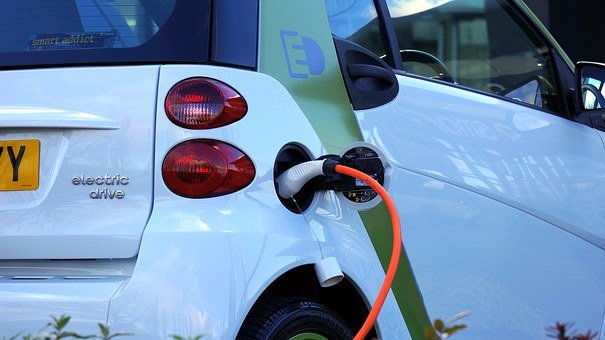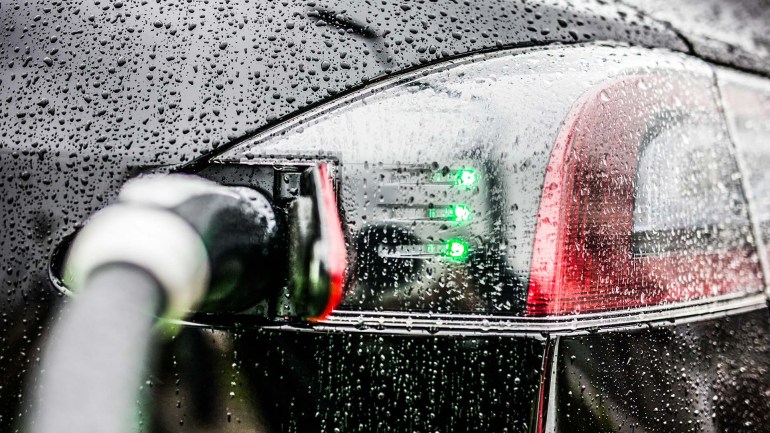EV Myths
I am grateful to a friend for giving me sight of a compelling paper compiled by the UK’s Department of Transport. Baroness Vere of Norbiton referred the paper to the UK’s House of Lords to dispel some of the myths surrounding electric vehicles (EV’s). I have adapted the paper for this post. Many of the references are UK specific; but the overall messages are common to everyone who is interested in EV’s.
Myths
Electric vehicles (EVs) don’t have the battery range to travel as far as people need.
Reality By car, 99% of journeys in England are under 100 miles, meaning most drivers’ needs are easily met by an electric car. For those travelling further, there are over 20 models available with a quoted 200-plus mile range and some new electric cars come with a range of over 270 miles, enough to get from Southampton to York.
There aren’t enough chargepoints and they’re too slow.

Reality A recent NGO study found that the UK now has more rapid chargers every 100 miles of key strategic road than any country in Europe. Industry statistics show that there are over 25,000 public chargepoints available across the UK and over 4,500 rapid chargers. On average, over 500 new chargers are being added to the UK’s road network each month, of which over 100 are rapid.

It is also important to recognise that this is in addition to home charging. There are 500,000 plug-in vehicles on UK roads and evidence suggests that those with off-street parking can meet most of their charging needs at home while their vehicles are parked.
Only people with off-street parking will be able to easily charge their EV.
Reality Our studies show that those without access to off-street parking are using a mix of public charging options like on-street residential chargers and chargers at supermarkets. This suggests that drivers without access to off-street parking are already making the switch to EVs, despite being in a minority (around 10% currently) and taking advantage of a range of charging options.Only 1% of EV drivers want to switch back to petrol or diesel.
Electric vehicles are too expensive.
Reality EVs do cost more to buy outright today but they already benefit from a huge advantage in running costs: as low as 1p a mile for off-peak electricity and far fewer moving parts, so much lower maintenance costs. But already, in several cases, EVs have a lower total cost over 4 years in 2021.

The battery will need replacing every 5 years.
Reality There are well over 10 million EVs on the world’s roads already and there is no evidence to suggest their lifespans are any different from a petrol or diesel vehicle. Most electric vehicle batteries have warranties of around 8 years (or 100,000 miles) but are expected to last much longer with their lifespan continuing to improve.
Materials used in batteries come from questionable sources.
Reality It is true that there are current challenges in ensuring the transparency and sustainability of materials used in batteries and electric motors (although this applies across many manufactured goods including smartphones and laptops). EV manufacturers are also highly focused on both transparency and security in their supply chain (for good business reasons) and on minimising the use of elements like cobalt and ‘rare earths’ in their designs.
Batteries can’t be recycled and end up in landfill.
Reality Existing (UK) regulations ban the disposal of EV batteries to landfill and incineration. Battery producers are obligated to take back EV batteries free of charge and ensure they are treated at permitted facilities that meet the required recycling efficiency standards. With the increasing number of EV batteries, we are reviewing these regulations. We want to create a circular economy for EV batteries to maximise the economic and environmental opportunities of the transition to zero emission vehicles.
It takes too long to charge an electric vehicle.
Reality Most charging will be done at or near home overnight. However, new cars are typically capable of charging up 120 miles or more in as little as 20 minutes – the time it takes to enjoy a cup of coffee. And potential charging speeds have increased by a factor of 5 in the past few years as engineers have started to focus seriously on EVs as the future of transport.

Building an electric car generates more carbon emissions than it saves from driving.
Reality This has been debunked in numerous well-respected studies. It is true that an EV may have higher emissions associated purely with manufacture than a petrol or diesel car. But a new battery-electric car, operated in the UK, has just a third of the lifetime greenhouse gas emissions of an equivalent new petrol car, even including battery production. And they are getting progressively cleaner as electricity generation decarbonises.
The electricity supply won’t be able to cope if everyone switches to electric cars.
Reality The (UK) Committee on Climate Change suggests that electrifying the vehicle fleet could result in road transport, making up 15% to 20% of total electricity demand in 2050. We are confident the grid will be able to cope, through the robust processes in place for bringing forward new generation and grid upgrades. Plus, smart charging reduces the need for new infrastructure and EVs could bring benefits to the grid in due course through technologies such as vehicle to grid.
Electric vehicles can’t tow caravans or trailers.
Reality Like all other cars, electric vehicles need to be ‘type approved’ to tow a caravan or trailers. An increasing number of EVs are coming to market with this capability. A caravan or trailer towed by a zero-emission vehicle can also display a green number plate.
Electric vehicles can’t be towed.
Reality When an EV breaks down, it can be towed slowly out of immediate danger (for example, when in a live traffic lane), to await further assistance, just like any other vehicle. For towing at higher speeds and longer distances, manufacturers require that EVs must be towed with the wheels off the ground. This is also the case for many automatic petrol and diesel vehicles, so not a new challenge for vehicle recovery companies.
Electric vehicles can’t be driven or charged in the rain.

Reality Not true. EVs must comply with tough technical rules prior to entering the market, including crash and electrical safety, making them safe to drive and charge in a wide range of weather conditions. Drivers should take the usual precautions to use only the correct charging cable, that it is undamaged, and to follow the manufacturer’s instructions. As with any vehicle, drivers should also consult the owner manual for guidance on the maximum wading depth.
Publicly available chargepoints are often broken.
Reality EV consumers should expect a reliable public network wherever they drive in the UK. Having chargepoints out of action is inconvenient, frustrating and can be unsafe – although according to Zap-Map, 9 out of 10 chargepoints are working at any point in time.
There are too many different sockets on EVs and consumers cannot charge at every chargepoint.
Reality The government legislated in 2017 to ensure all new and replacement public chargepoints must offer standardised connectors. This means that the vast majority of EVs can charge on the entire UK public charging network.
Summary
Nothing we do is perfect or pollution free. EV’s are the most efficient personal transport available and will improve rapidly. We need to move ahead with their adoption as rapidly as possible. Humans are resistant to change and sometimes exaggerate downsides to avoid changing.
Worked on the article:

Wanlikhang





